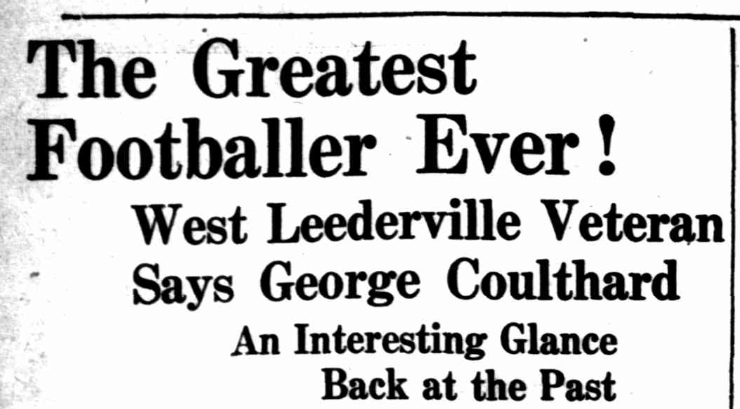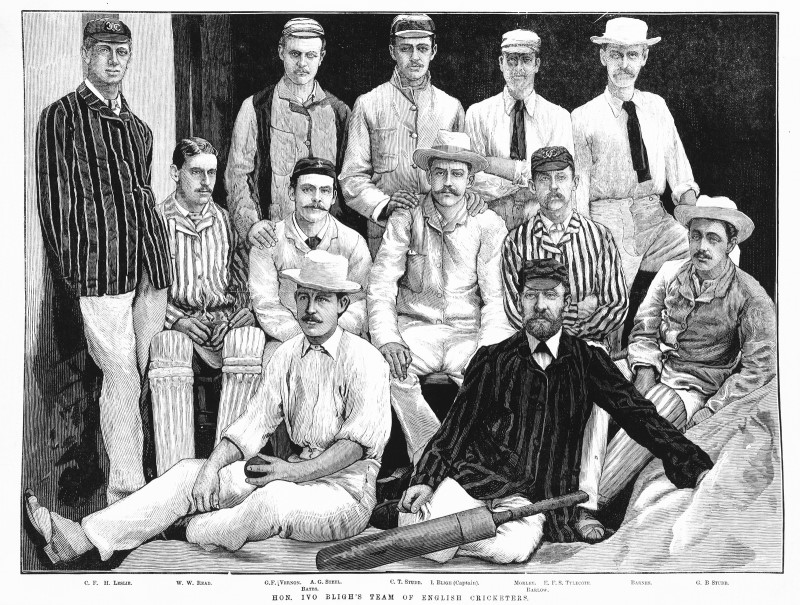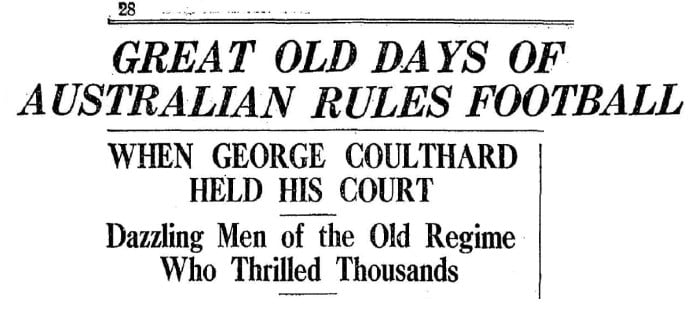This most unusual football season reaches its denouement this weekend. We have to go back nearly a century to find a grand final played so late in the year when Essendon defeated Fitzroy on the 20 October 1923. 1
The game has had a long history, and on occasions world events have intervened. In 1916, the Great War reduced the competition to four teams. Fitzroy won only two games for the season, finished last, qualified in fourth place for the finals and won the premiership. Along with 2000, when the AFL wanted to avoid a clash with the Sydney Olympics, it was the earliest grand final, both games were played on September 2nd.
In 1942 the MCG became ‘Camp Murphy’ and until 1945 was progressively occupied by US and Australian forces. Football continued but grand finals were played at Princes Park (1942/3/5) and the Junction Oval (1944). Due to wartime travel issues Geelong didn’t participate during the 1942/3 seasons.
In 1991 the grand final was played at Waverley Park during reconstruction of the MCG’s Southern Stand.
However season 2020, with a reduced fixture, interstate hubs, an interstate grand final, with matches played in empty or near empty stadiums, represents the greatest disruption the game has seen.

As far back as 1858 the game we know as Australian Rules began being played. Quite quickly clubs were formed and an ad hoc competition developed. From the early 1860s clubs competed for the Challenge Cup. In 1877 a more organised competition commenced with the formation of the Victorian Football Association.
Emerging at the same time as the VFA was the game’s first superstar, Carlton’s George Coulthard.
George Coulthard was a splendid athlete. As well as being one of football’s finest 19th century players, he was also a Test cricketer and Test match umpire.
Admired widely for his exceptional sporting prowess it would seem George Coulthard had the world at his feet.
Often though our triumphs can be overtaken by the random unfairness of life.

Of eight Coulthard siblings who reached adulthood only one lived beyond 30. Seven succumbed to tuberculosis. George passed away at only 27.
The Coulthard family, parents Thomas and Elizabeth, and four children emigrated from Stanhope, County Durham in England. The family arrived in December 1854 aboard the ship Falcon.
Four further children, including George in 1856, were born after the family settled in Melbourne. Tragedy was never far away. When George was ten his father died. The family lost their mother in 1873. The next year 17 year old George commenced his football career with regular appearances for the Carlton Imperials. In 1876 he graduated to the Carlton senior team.

The following year George Coulthard had established himself as a dominant player in the inaugural season of the Victorian Football Association. The Australasian described his play.
‘Meaney then got it (the ball) and sallied forward, but was met by Coulthard, who fell upon him and smote him hip and thigh ; then carried the leather forward by one of his irresistible rushes.’
The Australasian 18 August, 1877 p. 12.
The Footballer magazine summed him up glowingly:
1877 – ‘A brilliant player, back or forward and untiring in his exertions when following; a good kick and mark; and always plays for the success of his side; possesses few equals.’
1878 – ‘Has fully maintained his reputation as a brilliant player as a follower, unequalled for activity and endurance, and when played back, his coolness, dodging and long kicks render him invaluable.’
The Footballer : An annual record of football in Victoria 1877 (p. 35) 1878 (p. 31)
In 1879 The Australasian wrote:
‘George Coulthard, of Carlton. Back, forward, or following, and nowhere out of place, the grandest player of the day, it is doubtful if for general excellence his equal has ever been seen in Victoria.’
The Australasian 18 October 1879 p.13

For the next few years Coulthard continued to dominate the VFA competition. He was also a fine cricketer. In 1879 the 22 year old George Coulthard was engaged as cricket umpire when Lord Harris’s England side toured Australia. There was a single Test match (won by Australia) followed by two matches against New South Wales and Victoria respectively. George Coulthard stood as umpire in all matches.
In fact in one of the NSW matches his co-umpire was Edmund Barton, later Australia’s first Prime Minister. In that game Coulthard adjudged Sydney hero Billy Murdoch run out, a decision which caused a riot.2
At the start of 1882 he was selected in the Australian eleven and played a solitary test match.
But even for this sporting colossus, the tragedies of 19th century life were never far away. In 1881 he married Letitia Jackson. The following year they became parents to a daughter. In an oft repeated sadness of those times their baby died five days later. At that stage George Coulthard had already lost five siblings (all in their 20s) to tuberculosis.
Tuberculosis was the major cause of death in the latter part of the 19th century. Known as consumption or Phthisis it was an infectious bacterial disease, claiming very high mortality amongst the ages of 20-40.3
It was not until the late 1940s, when the antibiotic Streptomycin was discovered, that tuberculosis could be effectively treated.4
In 1882 George was still a dominant footballer in the VFA, but late in the season, in a game against Hotham, he became involved in a controversial incident with opposition player Joey Tankard. A scrimmage left Tankard on the ground. He leapt up and struck George Coulthard and the two exchanged blows. Both were suspended for the remainder of the season. George Coulthard never played football again.

Late in 1882 he was scheduled to umpire possibly Test cricket’s most famous series – the tour of Ivo Bligh’s England team that saw the birth of the Ashes. But before the series commenced insidious tuberculosis starting to take hold .He withdrew from umpiring duties for several preliminary matches. 5
At the end of December, just prior to the first Test, he umpired a match between the touring English side and 18 men of Ballarat. 6 It was his last act on a sporting field.
By the start of the 1883 season it was reported, with much regret, that George Coulthard had retired due to serious illness. The sporting world rallied around him. 7 He passed away on the 22 October 1883.

His was a talent remembered long after his sporting career ended. A century after his untimely death he was one of the inaugural inductees to the AFL Hall of Fame in 1996.
Further reading:
De Bolfo, T., & Carlton Football Club. (2009). Out of the blue : Defining moments of the Carlton Football Club [Melbourne]: Carlton Football Club.
Australian Rules football research guide
Footnotes:
- Wet Weather Hangs Up League Grand Final Sporting Globe 17 October 1923: p.8.
- The late cricket match . The Sydney Morning Herald 13 February 1879 p.5 A letter from Edmund Barton supporting Coulthard’s decision.
- Vital statistics p.258 Year Book 1883/4 Keeping Healthy in Nineteenth-Century Australia. Raftery, J. (1999).Health and History 1(4), pp. 274-297
- History of tuberculosis control in Australia National Health and Medical Research Council
- The English Team at Tamworth The Argus 12 December 1882 p. 8. Cricket Weekly Times 16 December 1882 p.5.
- Boxing DayThe Argus 27 December 1882 p. 6
- In March the Hotham footballers, putting aside the ill-feeling of the Tankard-Coulthard incident, donated 3 guineas for The Coulthard Relief Fund North Melbourne Advertiser 16 March 1883: 2 All proceeds from the Carlton-Melbourne match in early June was for George Coulthard’s benefit Leader 9 June 1883. p.20


George Coulthard’s nephew and namesake George (William George) Coulthard featured in advertisements for Zam-Buk ointment during World War 1. The advertisements claimed that Zam-Buk is “excellent for cuts, abrasions, eczema, bad legs, sores, boils, breakings-out, piles, stiffness, chafings, ringworms, strained muscles, poisoned wounds, bruises, scalds, abscesses, scratches, back pains, festering sores, blood poison, sprains, pimples, stiff neck, ulcers, running sores, swellings, &c.” However, George’s younger brother Vincent John Coulthard contracted VD twice while serving with the AIF and this disease was beyond the healing powers of Zam-Buk ointment.
My grandfather was William George Coulthard